For the fourth time, Ars Electronica has partnered up with VW to create an exhibition for the VW Automobil Forum Unter den Linden in Berlin. This time around the theme is “Like A Second Nature”, it’s about what’s natural and artificial, about what we create and what is created by the nature around us, but also about the collission points and our perception of what we think is real and what’s not.
Type: Exhibition
Duration: June 6 – July 28, 2013
City, Country: Berlin, Germany
Venue: Automobil Forum Unter den Linden, Berlin

There no longer exists a single aspect of our lives in which technical devices or processes do not play a dominant role. In just about everything we do, we employ modern technology, are enveloped and even permeated by it as if by a second nature that we have created on our own and for ourselves. At ever shorter intervals, this ongoing technological development institutes a new set of facts & circumstances, and has long since established itself as one of the prime determinants of our social, scientific, economic and political reality. We are constantly creating new tools, new materials and new media. In going about this, we usually use as our model that very same nature we are endeavoring to comprehend, control and ultimately upgrade. But even if it’s merely a means to an end, this process of investigating flora and fauna also yields incidental benefits, opening up new findings and insights into life on The Blue Planet. And scientists aren’t the only ones at work weaving this web of development; artists as well seek and discover cognitive and emotional approaches and interpretations to thereby satisfy humankind’s longing to not entirely lose contact with our origins.
Fourth Exhibition Staged by Volkswagen Automobil Forum Unter den Linden and Ars Electronica Linz
This fourth exhibition staged jointly by Volkswagen Automobil Forum Unter den Linden and Ars Electronica Linz scrutinizes the determinative elements in this process’ past, present and future—those factors that enable us to become cognizant of what is natural and artificial in everyday life, to experience those two and differentiate between them. Artistic works, perspectives and positions selected from the media art network of the Prix Ars Electronica, the world’s most prestigious and highest endowed prize honoring excellence in media art, underscore the tremendous relevance of investigating this issue and likewise shed light on its multifarious effects on everyday life.
Unconventional Configurations and New Types of Artists
Each of 15 works of art uniquely manifests various approaches and associations. This show illustrates the wide array of roles artists assume, of themes their concepts and configurations encompass, of unconventional ways they choose to relate their narratives. What also becomes evident over the course of this encounter is a new type of artist, one characterized by a high level of substantive competence—which is to say artistic, scientific and sociopolitical capacities—and, with respect to art’s role, one who keeps the big picture in mind. This applies to Agnes Meyer-Brandis and her ironic take on science and how scientists see themselves, as well as to Willem van Weeghel and his playful dealings with perception and self-perception. Observations of nature served Yasuhiro Suzuki, Akira Nakayasu and Alistair McClymont as sources of inspiration for their aesthetically demanding, highly expressive works having to do with robotic plants, blinking leaves and artificially generated tornados. The Brazilian duo Cantoni/Crescenti, on the other hand, sets up an elaborate configuration of light patterns, shadows and reflections as a means of shifting the installation visitors themselves and their reactions and observations into the focal point of attention.
Artworks
Rejane Cantoni & Leonardo Crescenti (BR)
WALL (2012)
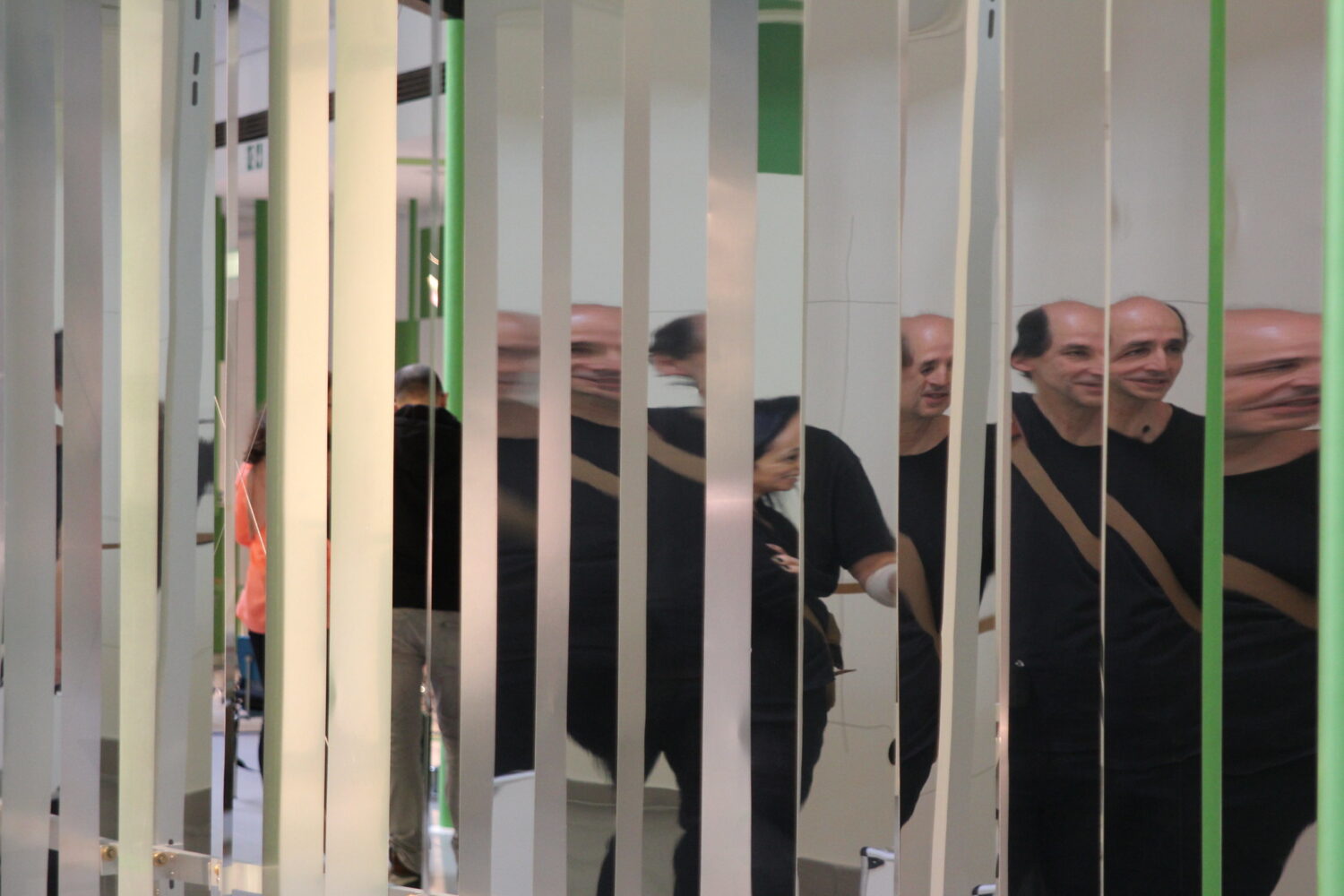
This wall isn’t the least bit inflexible; it reacts to those who confront it. WALL is an interactive kinetic sculpture composed of 30 vertically arrayed, mirrored-finished aluminum panels that rotate 180º in a linear sequence. The movement commences when an installation visitor moves past one end of the wall, and continues in a chain reaction like falling dominoes. One effect triggers the next. Passers-by experience a series of optical phenomena, reflections and distortions that alter the beholders’ perception of reality. This interaction with installation visitors endows WALL with a sort of personality. The specialty of Rejane Cantoni and Leonardo Crescenti is coming up with audiovisual and haptic interfaces that make for a natural mode of exploring virtual, remote and hybrid environments.
Willem van Weeghel (NL)
DYNAMIC STRUCTURE 29117 (2007 – 2012)

The image is affixed to the wall but the motif is in constant motion. DYNAMIC STRUCTURE 29117 by Dutch artist Willem van Weeghel consists of 32 black lines rotating independently of one another on a white background. Clusters of four rays pivot around eight different points. Each four-ray configuration moves differently; the rays sometime overlap like the hands of a clock. The motion is smooth, and can be either clockwise or counterclockwise. A control system unseen by installation visitors coordinates the rays’ positions and constantly creates new forms. The structures move in the transitional zone between chaos and order. There is neither repetition of the cycle of motion nor any annoying ticking.
Yasuhiro Suzuki (JP)
BLINKING LEAVES (2003)

This sculpture is sturdily rooted in the exhibition space like a big tree trunk, but hundreds of tiny paper leaves are what makes its imposing presence truly unfold. The white leaves are blown upwards in its internal cylinder to briefly conjure up an imaginary tree with resplendent foliage in its crown. The leaves are imprinted with an open eye on one side and a closed eye on the other, which makes them seem to be winking at installation visitors during their tumbling descent to the floor. And also inviting visitors to restock the tree, since the leaves can be gathered and fed back into the sculpture to trigger another fast-forward change of seasons. Japanese artist Yasuhiro Suzuki goes more deeply into this “fluttering” and “blinking” in his 2011 book “Mabataki to Habataki.”
Akira Nakayasu (JP)
PLANT (2010)

Artist/designer Akira Nakayasu followed up his first work—“Himawari” (2008), a robot in the form of a sunflower—with further research on robotic plants. Wind-blown grass inspired this interactive installation entitled PLANT. The robotic plant features 169 artificial leaves controlled by proprietary shape-memory alloy actuators. Each leaf reacts independently to motion—for instance, a hand approaching it—by gently wafting in the virtual wind.
Takahiro Matsuo (JP)
PHANTASM (2007)

Visitors enter the world of PHANTASM with a glowing ball of light in hand. Butterflies react to the light, fly towards it and pursue the illumination. If a visitor shields the ball with his/her hands, the butterflies disappear, along with the magical environment in which they flutter about. This LED-studded ball of light is thus the key that opens up a virtual world of fantasy. How the visitor handles the ball is registered in real time by a sensor camera mounted on the ceiling of the installation space. Thus, the activity of the butterflies and the accompanying background music adapt to changes in the light emitted by the ball. Takahiro Matsuo’s interactive projection thus engenders extraordinary settings for relaxation and dreaming.
Alistair McClymont (UK)
THE LIMITATIONS OF LOGIC AND THE ABSENCE OF ABSOLUTE CERTAINTY (2008)
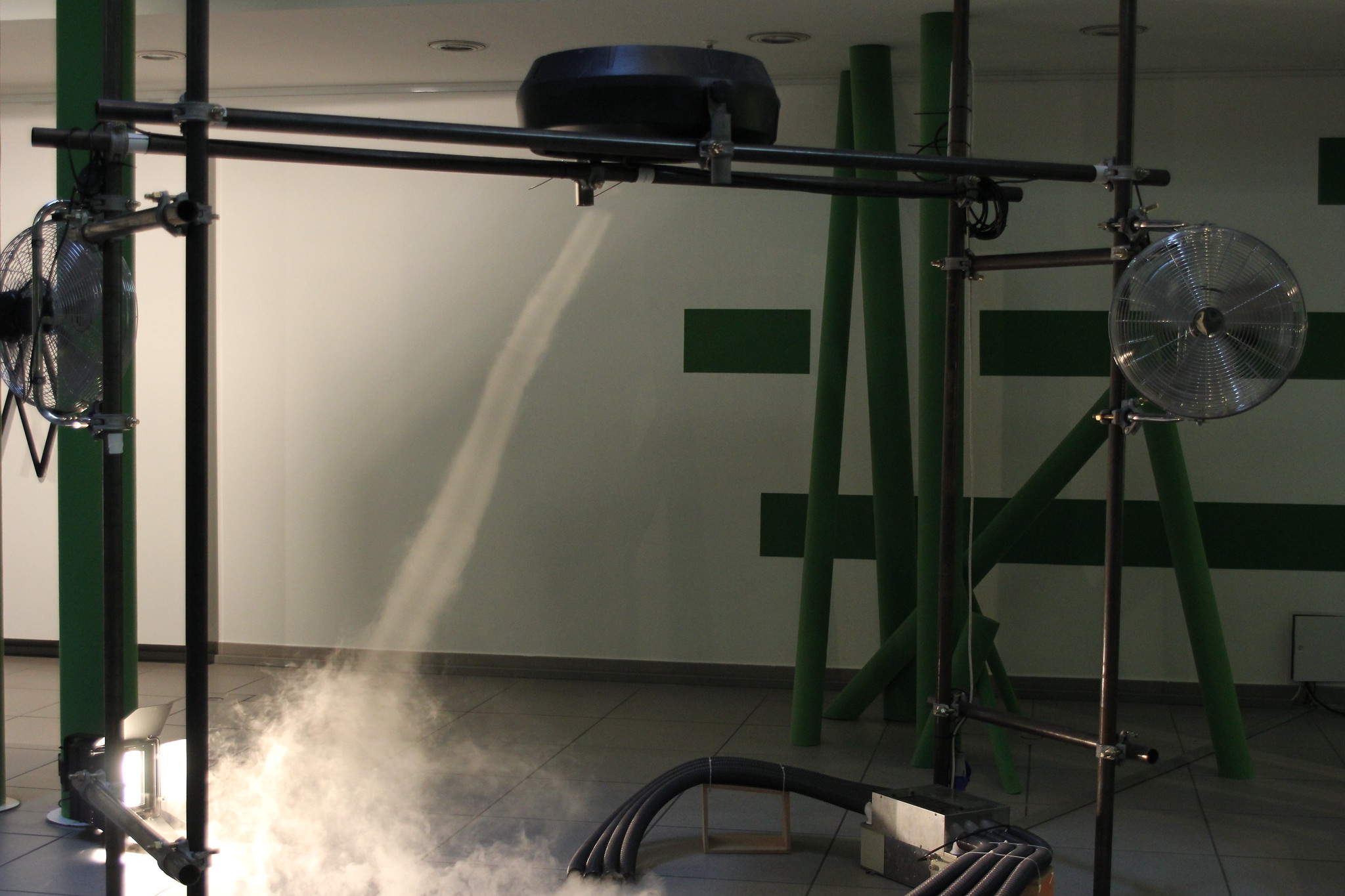
Many people are enthralled by natural phenomena occurring on our planet. British artist Alistair McClymont constructed a model of one in order to better understand it. Thus, he literally tore a tornado out of its natural surroundings, thereby reducing the phenomenon to its essential form and then using technological aids to bring it back to life. Nevertheless, there’s still that certain something—both in the original as well as the mockup—that remains essentially incomprehensible to us, something upon which we humans can exert no influence.
Masato Sekine (JP)
ENE-GEOMETRIX (2007)

ENE-GEOMETRIX generates fascinating patterns by regulating the temperature difference between a fluid and its environment. Peltier modules arrayed in a grid warm or cool the liquid. As soon as temperature equilibrium is achieved, a stable linear pattern forms. When the temperatures of the fluid and its environment diverge, currents cause the geometric pattern to break down. Masato Sekine’s installation illustrates the interrelationship between humankind and nature when the encounter of two magnitudes—artificially controlled heat energy on one hand, and natural self-organization on the other—at a shared location produces dynamic patterns.
Ivan Henriques (BR)
PROTOTYPE FOR A NEW BIOMACHINE (2012)

Now that lots of people are going high-tech, it’s high time for plants to do so too. Brazilian artist Ivan Henriques’ interactive BIOMACHINE explores new channels of communication among human beings, living organisms and machines. It transforms a tropical plant into a sensor. When an installation visitor touches the leaves of this Homalomena, a flowering plant of the Araceae (Arum) family, the entire plant registers this stimulus and transmits an electrical signal to an attached machine that proceeds to go into motion. The creation of this prototype will be followed up by additional research into the development of autonomous symbiotic bio-machines in which plants and mechanical devices literally merge into one unit.
Matthew Gardiner (AU)
ORIBOTICS (2010)
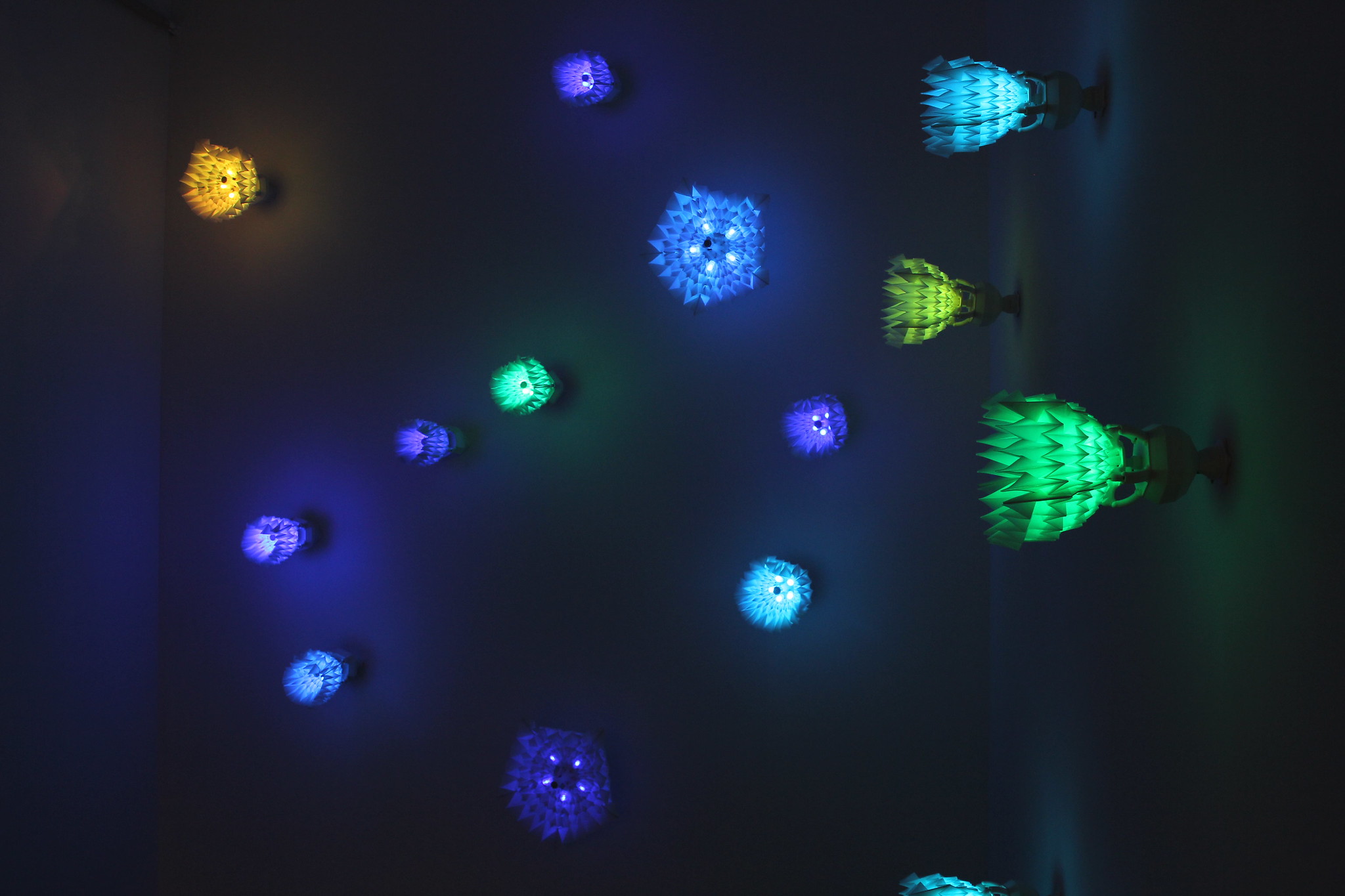
ORIBOTICS are the upshot of an artistically motivated synthesis of the traditional Japanese art of paper folding and state-of-the-art robotics. The artificial plant monitors its surrounding via sensor, opening its blossoms when an object approaches and thereby setting 1,050 folds into motion. When a blossom is activated, the other so-called oribots interlinked with it follow suit in a chain reaction and form an impressive image of a surreal meadow full of flowers. Matthew Gardiner works in what he calls oribotics, investigating aesthetic, biomechanical and morphological connections among nature, origami and robotics. The configuration of patterns of folds—particularly the precise array of V-shaped valleys and Λ-shaped ridges—determines the mechanical design, so that research focuses primarily on the discovery of patterns.
Keiko Takahashi (JP)
METER CRAWLER (2008 – 2013)

The retractable tape measure that Japanese artist Keiko Takahashi uses in this work seems no different than one any handyman has in his toolbox, but a simple technical enhancement endows this model with a life of its own. The result: an immediately recognizable resemblance to the physical appearance and leisurely locomotion of a creature with which we’re all familiar. The retractable tape measure inches along like a snail. METER CRAWLER extends its graduated band about five centimeters and digs the metal flange on the end into the ground to pull its housing forward. This case clearly illustrates how we humans, by bringing just a bit of imagination to bear, can discover similarities between nature and technology.
David Bowen (US)
TELE-PRESENT WIND (2010)

Is it possible to take the sensation of a gust of wind or slight breeze blowing outdoors and transpose it into a windowless room? How about from one spot on Earth to another? American artist David Bowen’s installation does just that. An accelerometer is attached to a plant growing outdoors and records the motion of the stalk swaying in the breeze. Even the slightest puff produces data, which are transmitted into the installation space to 42 tiltable mechanical elements, each of which is mounted on the stalk of a dried plant. In real time and coordinated with wind conditions outside, the array of plants gracefully executes its synchronized dance.
Agnes Meyer-Brandis (DE)
EARTH-CORE-LABORATORY AND ELF-SCAN (2003–2004)
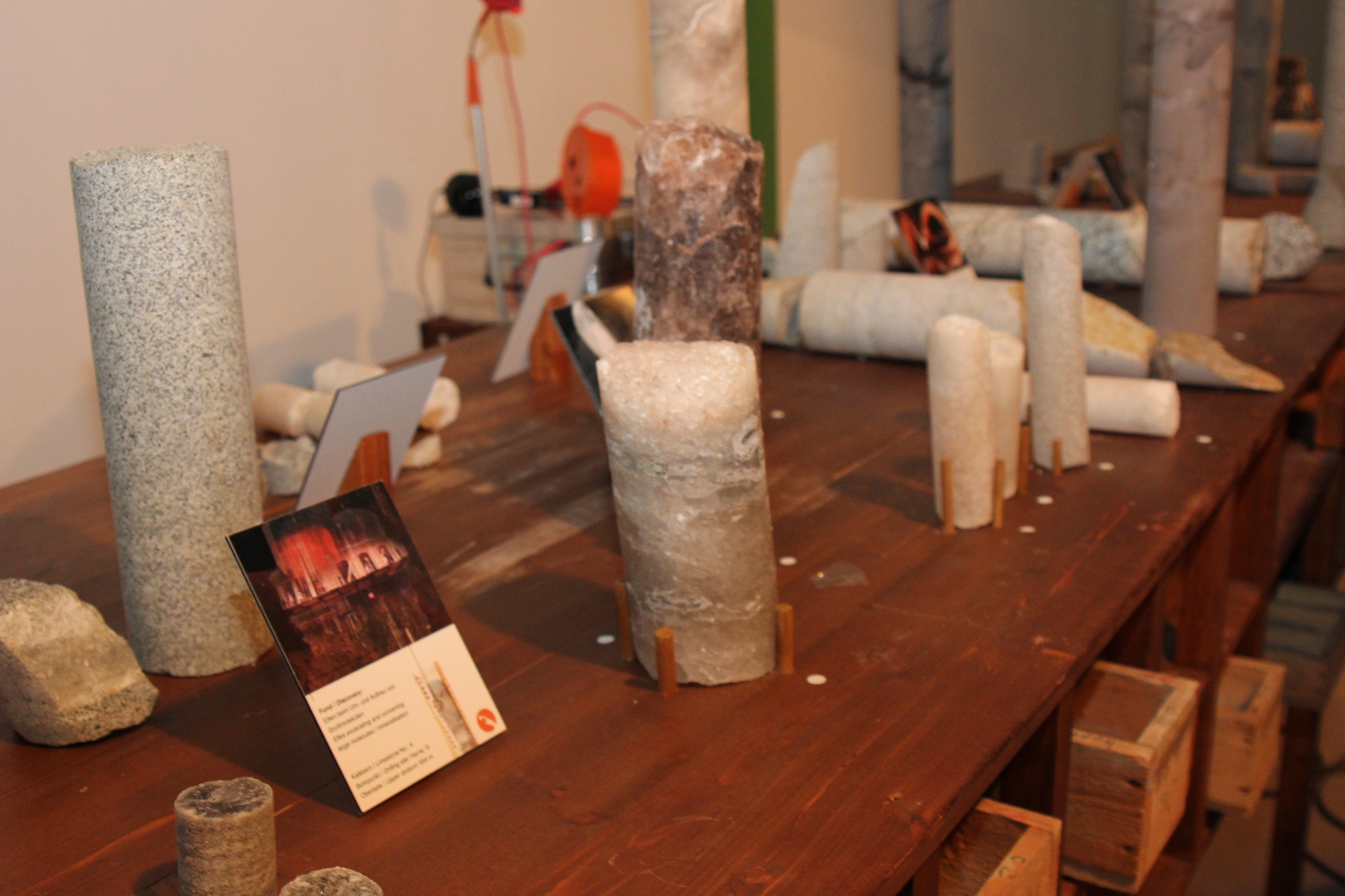
According to artist Agnes Meyer-Brandis, magnificent subterranean coral reefs exist not only on the ocean floor or in particular caves; they can be constantly migrating, and could be found at any place where sufficient water is present. Extremely sensitive monitoring devices augment human sensory organs to enable us to observe delicate worlds without intruding on them. A specially developed “parabit scanner” can be used to check extracted drilling core samples for the presence of subterranean biogenic reefs und micro-biotope life invisible to the naked eye. The scanner as well as the detector work without physical contact and their size is kept to a minimum in order to avoid frightening the tiny underground creatures and the elves inhabiting subterranean reefs.
Daniel Warnke (DE)
WINDOW FARMS (2012)
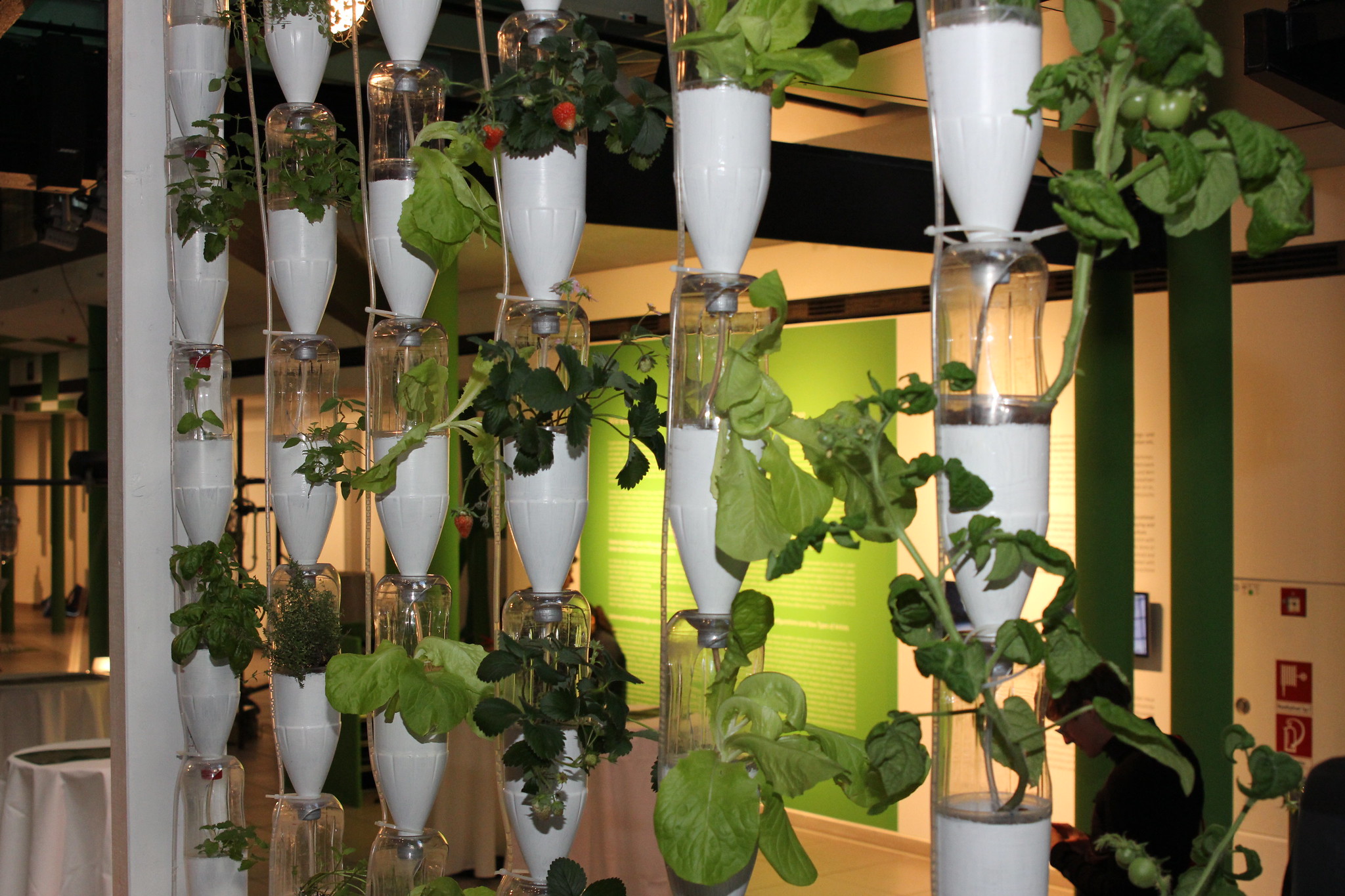
Having a garden of one’s own is the dream of many city dwellers. Now, WINDOW FARMS can make this dream come true—at least on a small scale. The creative solution: setting up hydroponics equipment vertically on an existing apartment window or a shop’s display window, and using simple, affordable materials like empty plastic bottles to optimize humidity and small lengths of tubing to water the plants. Daniel Warnke joined deople network and hooked up with an interdisciplinary crew working collaboratively in the spirit of design thinking in order to solve current and future problems. And this ultimately led him to build his first window farm. The idea originated in New York City and is based primarily on mutual support and open exchange among these urban sodbusters. The input: experience and knowledge; the output: vegetables and fruits grown on your own windowsill.
Iori Tomita (JP)
TRANSPARENT SPECIMEN (2012)
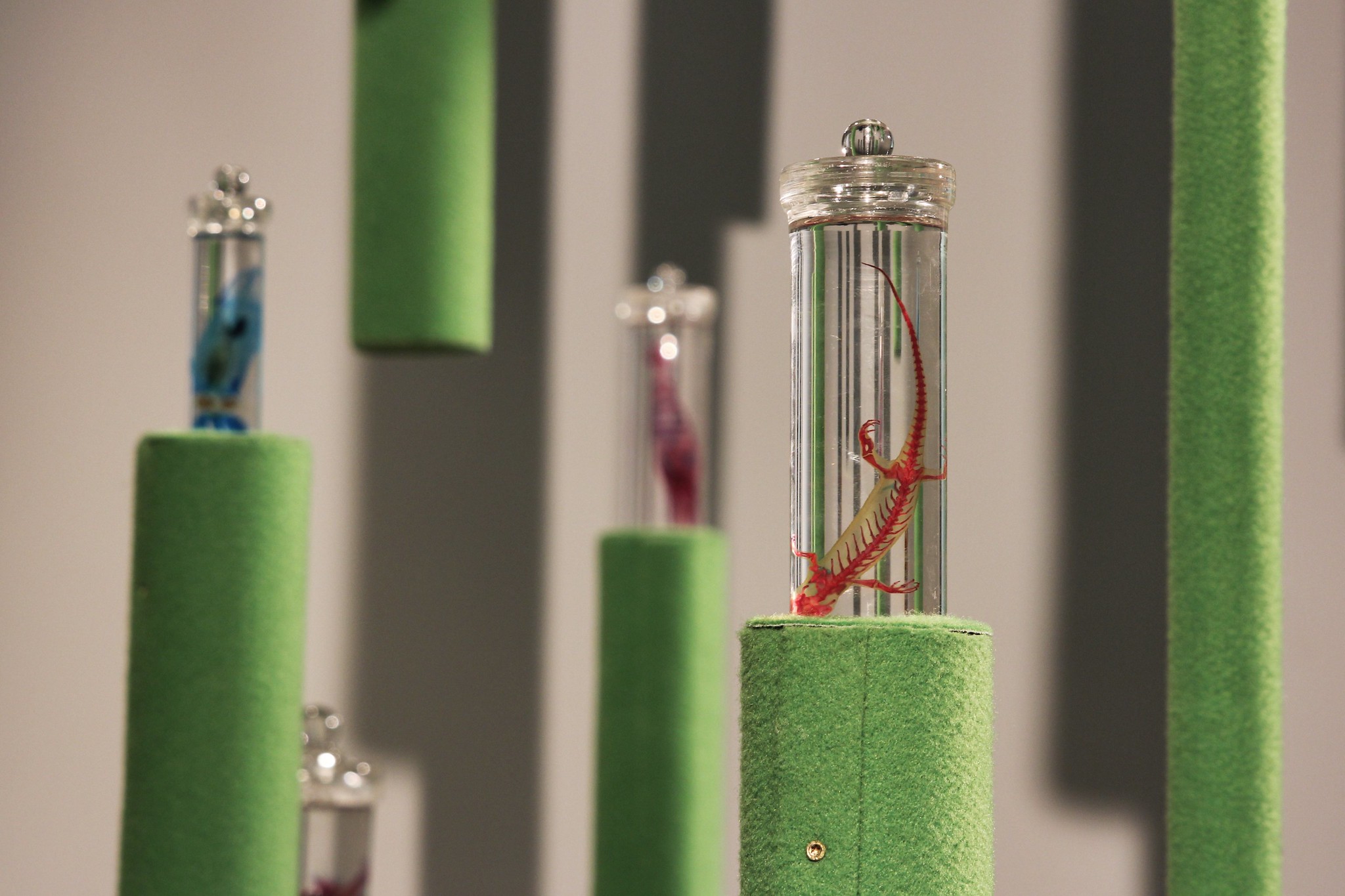
Japanese artist Iori Tomita turns sea creatures into “fantastic-strange” specimens. As a student, he learned the technique of producing specimens for scientific analysis purposes. The creatures’ muscle tissue is made translucent by dissolving their natural proteins. It takes laboratory techniques developed by scientists to reveal the precise forms created by nature. The body parts are stained, whereby the harder and softer tissues are treated with different colors. Depending on the size of the creature, it can take up to six months to create a specimen. Employing what is actually a method of scientific analysis, Iori Tomita creates bizarre sculptures that can be attributed to both art and science.
